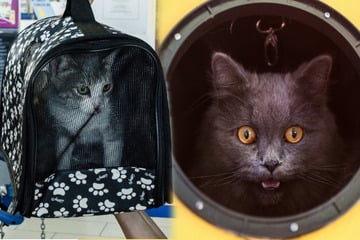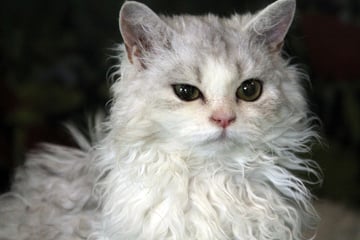Do cats sweat? Here's how your feline friend stays cool in the heat
The common understanding of how humans regulate heat cannot be applied to cats. Sweat fulfills a very different function in cats, but in what way? Do they even sweat at all? With TAG24's Cat Guide, your questions will be answered!
Why do cats sweat?
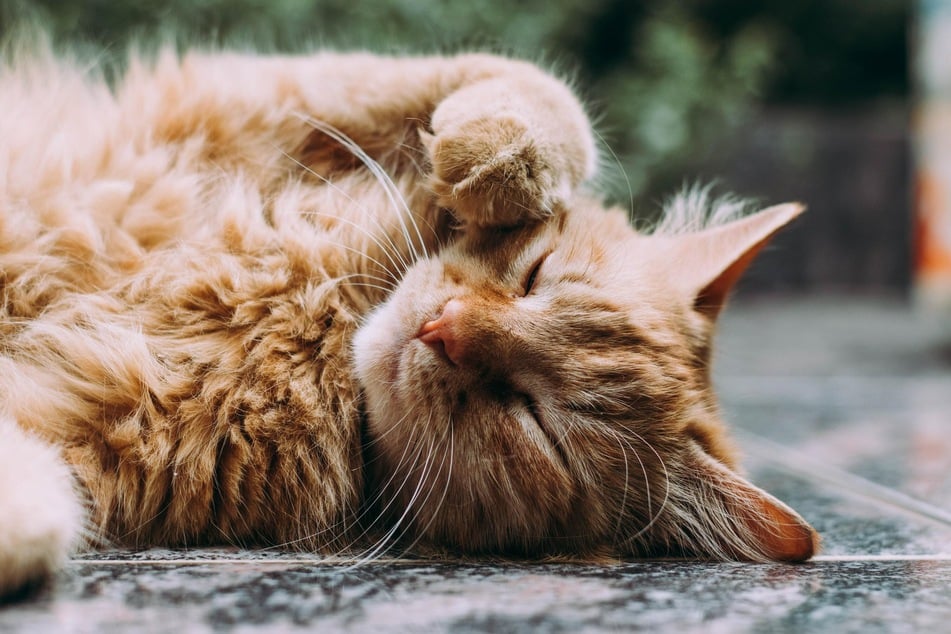
Whilst cats do sweat, the way that they regulate heat is vastly different to humans. Unlike humans, who have sweat glands distributed all over the body, cats only have them in very specific locations.
And unlike many other animals, including ourselves, cats' sweat glands do not protect them from overheating. Instead, they play a role in marking territory.
To mark particular places and objects as their own, cats rub their paws against them to spread their scents. The smell of this sweat-like substance warns other cats that this is occupied territory, with each cat having its own individual paw print.
Instead of using sweat to regulate their body temperature, cats have a variety of other cooling methods.
Why do cats pant?
You may notice that cats, much like dogs, sometimes stick their tongues out a little bit when they're breathing heavily. This is often noticeable during periods of extreme heat and is generally not something to be seriously worried about.
Cats will often open their mouths and pant purely to cool their bodies down. This is done through the release of saliva, which then evaporates, helping to reduce the cat's body temperature.
That being said, if you notice your cat panting far more than usual and are getting worried that your cat might be overheating or is sick, then make sure to take it to the veterinarian.
Where do cats sweat?
Unlike humans, cats do not sweat all over their body. Instead, sweat glands can be found in only a few locations and actually play an entirely different role to how we understand sweat.
Cats sweat from glands found on the lips, the corner of the chin, near the anus, and in bare patches of skin that surround the teats. They also sweat through the bottom of their paws.
The sweat that a cat excretes from these locations acts as part of their natural skin barrier. This barrier plays a variety of different roles depending on the specific part of the body that we're talking about. Heat protection, however, is not among them.
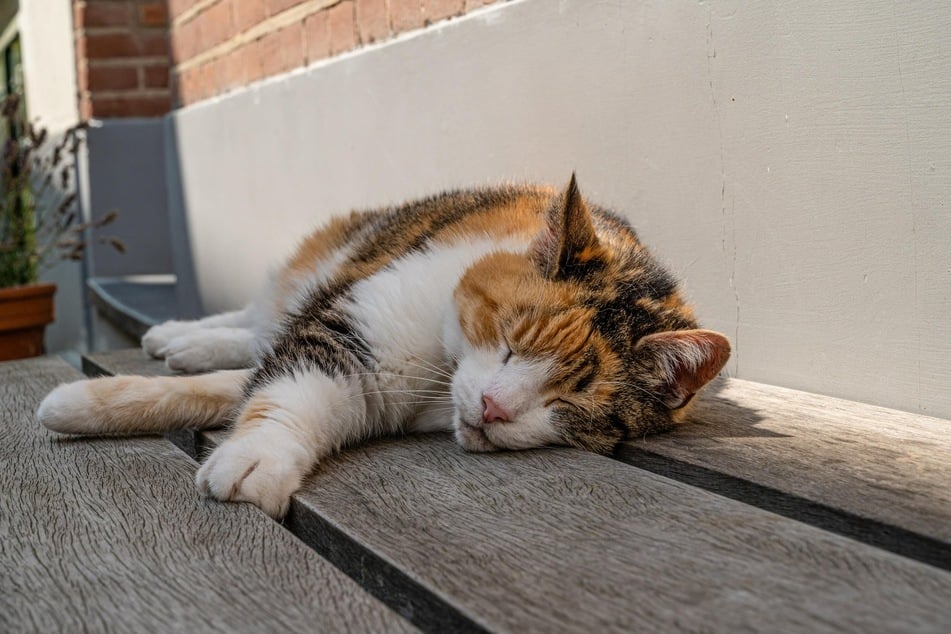
Do cats have sweat glands?
Yes, cats have sweat glands in a variety of locations around their body, and they perform different functions, but are not meant to protect cats from overheating like they are in similar animals. Instead, they provide a natural barrier for certain areas of the body, and to spread that territory-marking scent.
How do cats lower their body temperature?
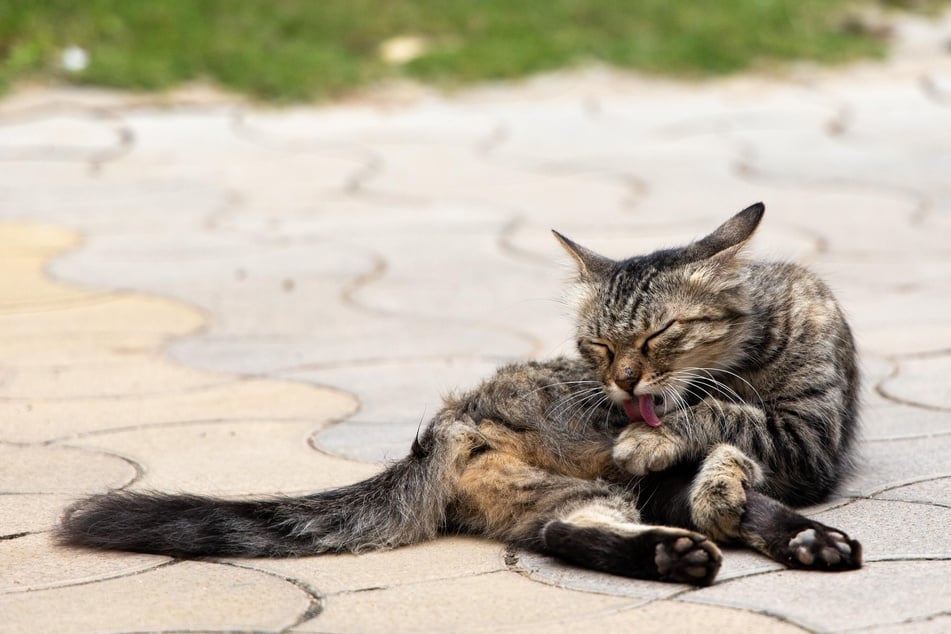
A healthy cat should manage to stay cool through its natural body functions.
To lower their body temperature, cats open their mouths and pant. Breathing evaporates saliva and cools down the cat. Whilst panting is also the main way dogs "sweat", it is only a small part of a cat's temperature regulation.
Cat owners should, however, remain alert to whether their cat is panting unusually hard, or behaving differently to usual. Heavy breathing is sometimes a sign of heart problems and could require a visit to the veterinarian.
Cats regulate their body temperature through their skin too, not unlike humans, and their body temperature will change depending on whether it is hot or cold. If your cat's ears are warm in the summer, it's not unusual, as their body temperature would be higher due to the heat.
But if your cat starts vomiting, panting unusually hard, has diarrhea, or is just unusually listless, you should check for a fever. A cat's normal body temperature should be between 100 and 105 degrees Fahrenheit, a fair bit higher than a human's. Anything above those numbers, though, and it's time for a visit to the vet.
In addition to a cat's skin, its fur also plays an important role in lowering their body temperature. The fur hairs prevent heat loss through the skin and also insulate it from outside heat. Dark and dull fur absorbs solar radiation much better than light fur, though, which is why darker cats struggle more with heat stress.
When cats change their coat, their fur becomes less dense, shorter, and also lighter. Typically, they change their coat through intensive grooming, which also doubles up as another method of heat regulation. When cats groom, their fur gets wet with saliva. This then evaporates, giving them further release from the heat and helping cool down their bodies.
Remember: Exercise is extra effort for cats when it is hot, as their body temperatures are higher. For this reason, most cats retreat in the hot summer and look for shady spots to nap in.
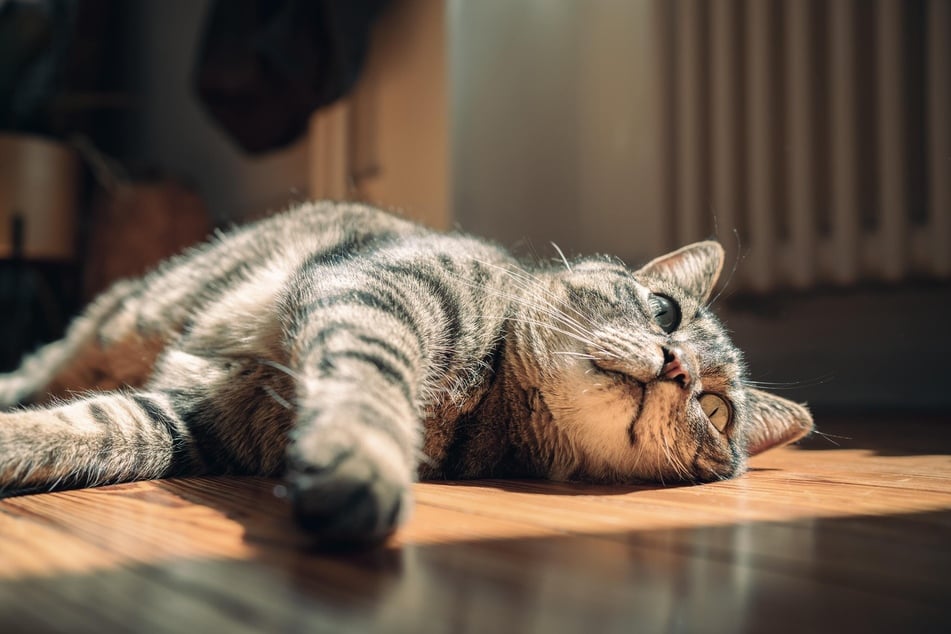
How to help cats keep cool in the heat
Whilst cats are not particularly sensitive to heat, there are a variety of things that cat owners can do to make them more comfortable.
Cats should never be confined to unventilated rooms and vehicles when temperatures are high. That's when their bodies can heat up way too much and too quickly, something that could cause death from heat stroke.
They also need plenty of fresh water when the weather's hot. If you feel that your cat is not drinking enough, a drinking fountain or cat pool could help.
If you want to make it easier for your feline friend to cool down through its skin and fur, you should brush it regularly, preferably daily. This goes especially for house cats with long fur, and this also has the added benefit of reducing the fur-balls that your cat coughs up.
But beware: Cat owners should never shave their cat. Fur naturally protects a cat's skin and a buzz cut could seriously harm it.
If a cat is clearly struggling and you can't take it to the vet or keep it in a colder environment, try wiping their fur with a wet rag. The moisture can help to cool down your kitty, but it won't necessarily like it, so don't expect any thanks.
Cats often withdraw and sleep a lot on hot days, as the heat can be very exhausting for them. Often this will mean that they are not in the mood for human contact and cat owners should accept this and not try to cuddle too much.
Finally, it can be very beneficial to offer your cat little spots around the place where they can comfortably shelter from the heat, such as a cooling mat. For some apartment cats, a shady spot in the fresh air of a secured balcony could also be a great option.
Cats look for cool places to survive the heat. Ultimately, if you want to help your cat stay cool, make sure that you are offering it plenty of shade and space.
Cover photo: Unsplash / Ludemeula Fernandes

